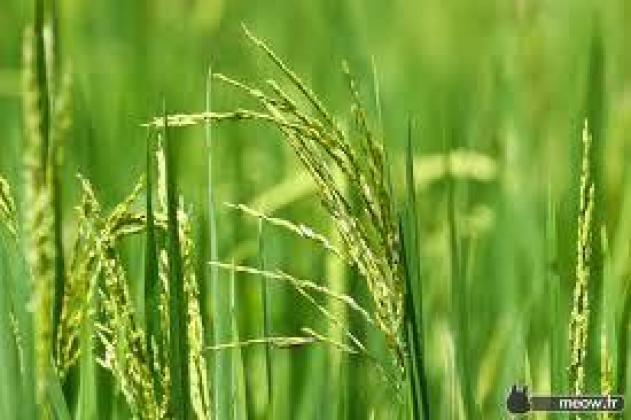
Bruce Schultz
With planting only weeks away, LSU AgCenter rice experts held a meeting on Feb. in Manssura 21 to bring farmers up to date on what they should consider in the upcoming crop.
AgCenter rice specialist Dustin Harrell said the 2018 yields of Provisia rice in its first year of commercial production surprised many. “I think a lot of growers were pleased with the Provisia system,” he said.
Provisia rice does not have the typical lush green appearance. It needs approximately the same amount of nitrogen as most rice, at 120 to 160 pounds per acre, and the seeding rate to get a good stand is about 50 to 70 pounds an acre, he said.
A new product that minimizes urea volatization losses, Anvol, has the potential to exceed Agrotain’s performance at preventing nitrogen losses on acid soils but performed similarly on neutral and alkaline soils, Harrell said.
AgCenter rice breeder Adam Famoso said a new Provisia line, PVL108, has a 10 percent yield improvement over the first release, PVL01.
Provisia has performed well to help farmers with bad red rice problems, he said.
A conventional line of rice, a cross of Chenier and Mermentau, looks promising. “It has shown some good potential increase of yield over Cheniere,” Famoso said.
A hybrid line, LAH169, has a yield between conventional varieties and available commercial hybrids, he said.
LSU AgCenter entomologist Blake Wilson said the colaspis beetle can be a pest of young rice. The pest is most often found in fields where soybeans were grown.
RiceTec hybrid rice will be available in Texas and Louisiana this year with either Nipsit or Dermacor seed treatment to help control rice water weevils, he said.
The South American rice miner is a pest of early-season rice, but the plants usually recover. It doesn’t appear that yields are substantially affected. “Usually when you see the injury, the damage has been done,” Wilson said.
The planthopper was a severe pest in a small number of field in Texas last year and in 2015, mostly in the ratoon crop there, and it could move into Louisiana, he said.
AgCenter weed scientist Eric Webster said the new herbicide Loyant controls about half of the Brooks paspalum weed. That level of control is about as good as can be expected, while Provisia only controls 12 percent, he said.
But Provisia has 85 percent control over southern watergrass and 97 percent control against creeping rivergrass, he said.
The new herbicide Gambit has good residual activity when applied at 1.5 ounces per acre. It is a good burndown choice when mixed with glyphosate, Webster said.
AgCenter economist Michael Deliberto said last year’s crop had an increase in acreage and yield. Harvested rice acreage of 2.9 million was a 23 percent increase from 2017. And the U.S. Department of Agriculture estimates the national rice yield at 7,692 pounds per acre, just 2 pounds below the record yield.
Rice exports are expected to increase based on larger supplies and more competitive prices. The U.S. is expected to regain some of its lost market share in Mexico, Central America and Latin America. Also, medium- and short-grain exports are expected to increase by nearly 35 percent, as reduced exports from Australia and Egypt may increase market access and share in the Middle East, the Mediterranean Region and parts of North Africa, he said.
“Long-grain rice prices face downward pressure as expanded acreage and production have contributed to a larger carry-out (ending stock levels) in 2018,” Deliberto said.
In recent U.S.-China negotiations, ag news outlets report that China is considering purchasing additional U.S. agriculture products such as corn, soybeans and wheat.
“If rice were to be included, it would certainly provide positive news to a market that is seeking increased export purchases and market access opportunities,” he said.
